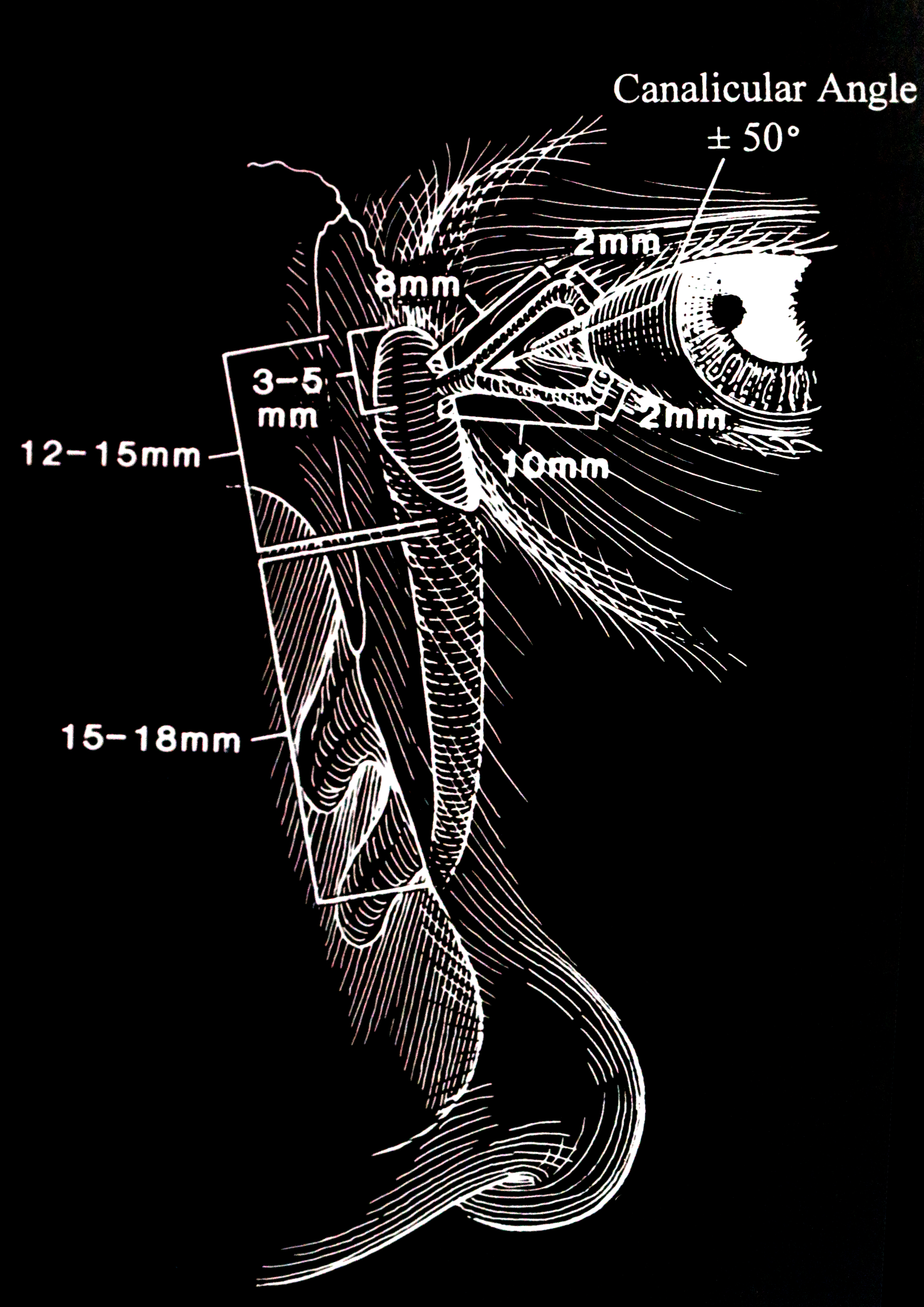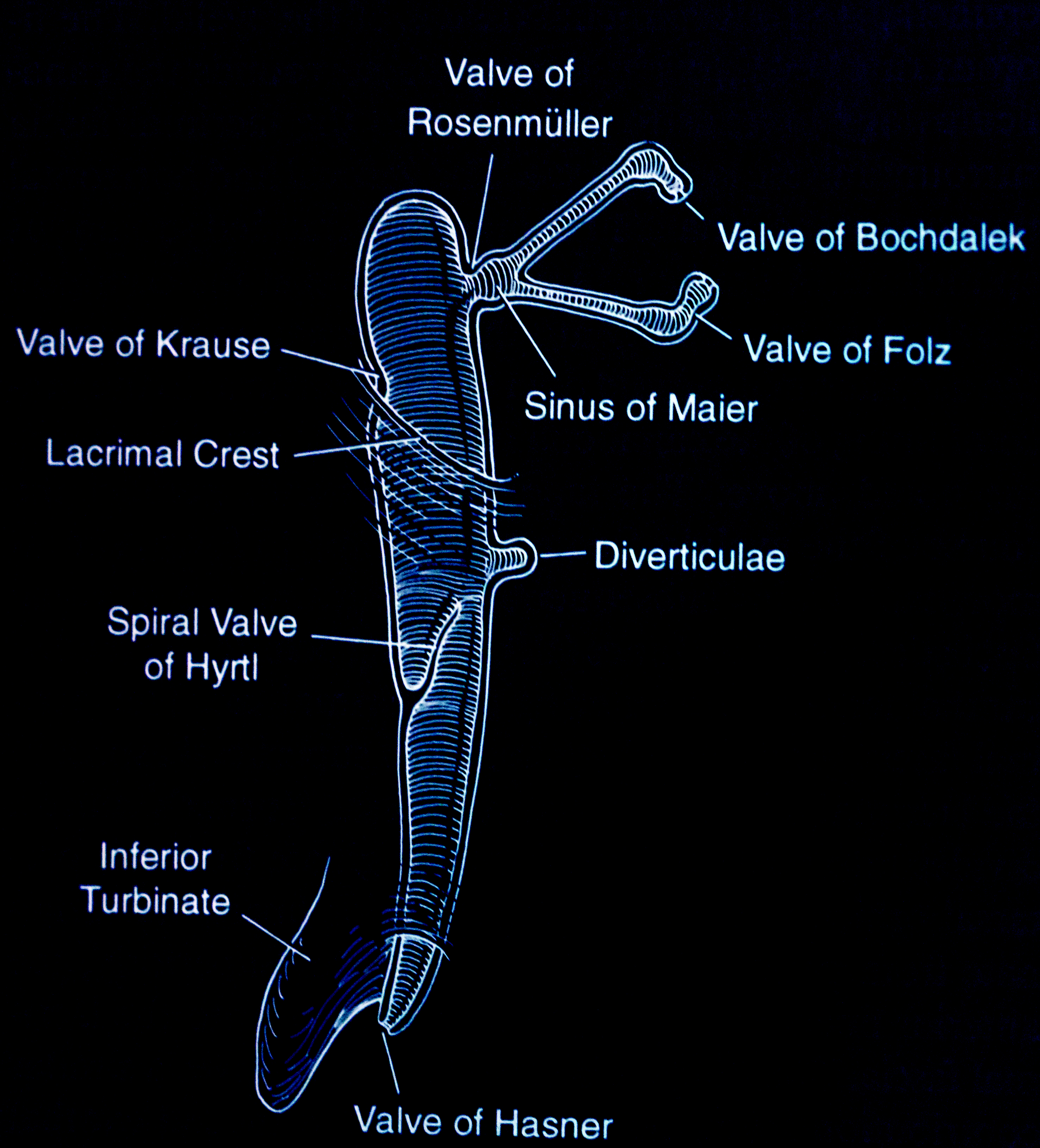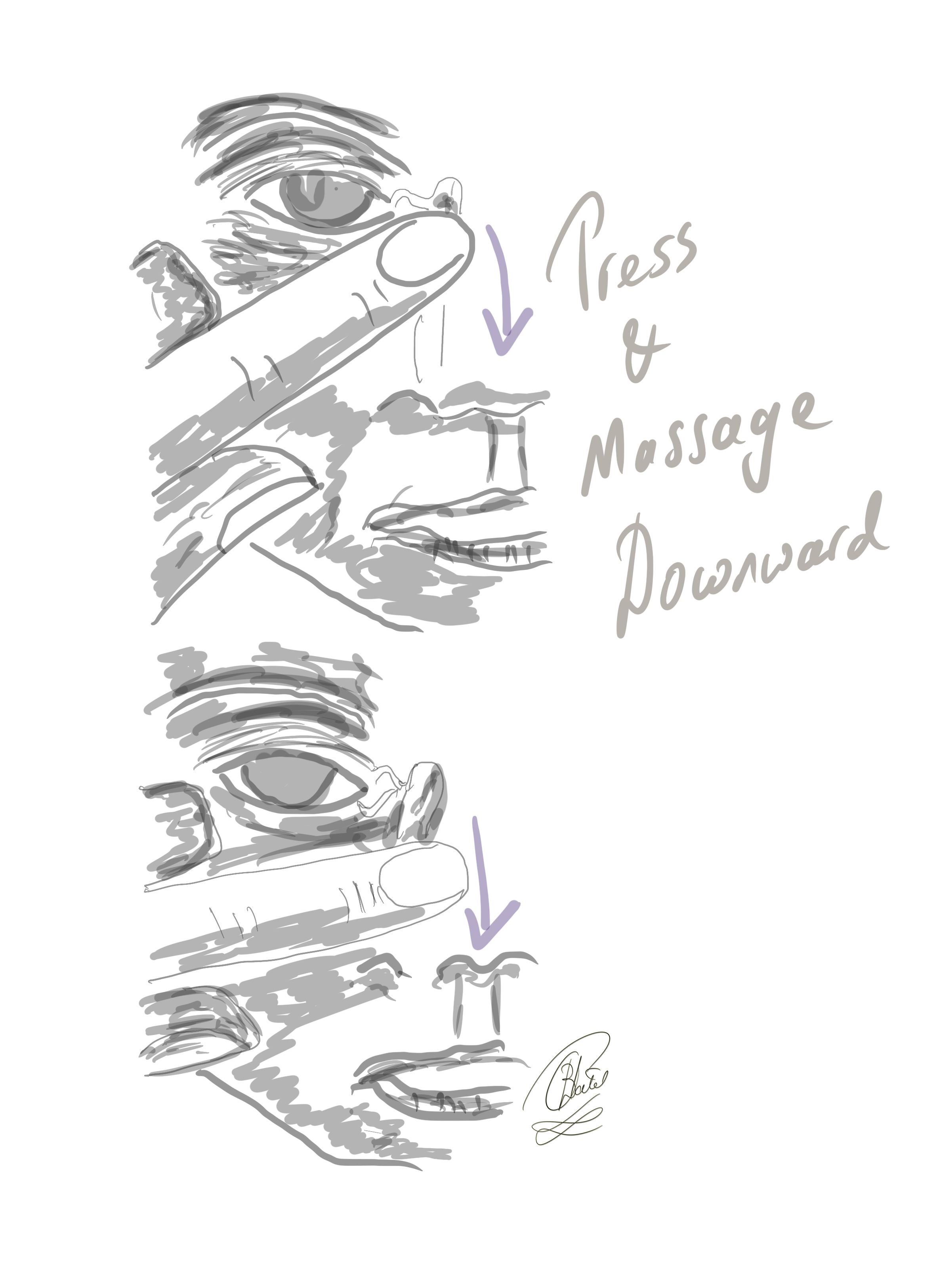[1]
MacEwen CJ, Young JD. Epiphora during the first year of life. Eye (London, England). 1991:5 ( Pt 5)():596-600
[PubMed PMID: 1794426]
[2]
Sevel D. Development and congenital abnormalities of the nasolacrimal apparatus. Journal of pediatric ophthalmology and strabismus. 1981 Sep-Oct:18(5):13-9
[PubMed PMID: 7299606]
[3]
Lorena SH, Silva JA, Scarpi MJ. Congenital nasolacrimal duct obstruction in premature children. Journal of pediatric ophthalmology and strabismus. 2013 Jul-Aug:50(4):239-44. doi: 10.3928/01913913-20130423-01. Epub 2013 Apr 30
[PubMed PMID: 23614467]
[4]
Olitsky SE. Update on congenital nasolacrimal duct obstruction. International ophthalmology clinics. 2014 Summer:54(3):1-7. doi: 10.1097/IIO.0000000000000030. Epub
[PubMed PMID: 24879099]
[5]
Matta NS, Singman EL, Silbert DI. Prevalence of amblyopia risk factors in congenital nasolacrimal duct obstruction. Journal of AAPOS : the official publication of the American Association for Pediatric Ophthalmology and Strabismus. 2010 Oct:14(5):386-8. doi: 10.1016/j.jaapos.2010.06.012. Epub
[PubMed PMID: 21035062]
[6]
Matta NS, Silbert DI. High prevalence of amblyopia risk factors in preverbal children with nasolacrimal duct obstruction. Journal of AAPOS : the official publication of the American Association for Pediatric Ophthalmology and Strabismus. 2011 Aug:15(4):350-2. doi: 10.1016/j.jaapos.2011.05.007. Epub
[PubMed PMID: 21907117]
[7]
CASSADY JV. Developmental anatomy of nasolacrimal duct. A.M.A. archives of ophthalmology. 1952 Feb:47(2):141-58
[PubMed PMID: 14894015]
[8]
Moscato EE, Kelly JP, Weiss A. Developmental anatomy of the nasolacrimal duct: implications for congenital obstruction. Ophthalmology. 2010 Dec:117(12):2430-4. doi: 10.1016/j.ophtha.2010.03.030. Epub 2010 Jul 24
[PubMed PMID: 20656354]
[9]
Weiss AH, Baran F, Kelly J. Congenital nasolacrimal duct obstruction: delineation of anatomic abnormalities with 3-dimensional reconstruction. Archives of ophthalmology (Chicago, Ill. : 1960). 2012 Jul:130(7):842-8. doi: 10.1001/archophthalmol.2012.36. Epub
[PubMed PMID: 22410626]
[10]
Petris C, Liu D. Probing for congenital nasolacrimal duct obstruction. The Cochrane database of systematic reviews. 2017 Jul 12:7(7):CD011109. doi: 10.1002/14651858.CD011109.pub2. Epub 2017 Jul 12
[PubMed PMID: 28700811]
Level 1 (high-level) evidence
[11]
Nucci P, Capoferri C, Alfarano R, Brancato R. Conservative management of congenital nasolacrimal duct obstruction. Journal of pediatric ophthalmology and strabismus. 1989 Jan-Feb:26(1):39-43
[PubMed PMID: 2915312]
[12]
Kakizaki H, Takahashi Y, Kinoshita S, Shiraki K, Iwaki M. The rate of symptomatic improvement of congenital nasolacrimal duct obstruction in Japanese infants treated with conservative management during the 1st year of age. Clinical ophthalmology (Auckland, N.Z.). 2008 Jun:2(2):291-4
[PubMed PMID: 19668718]
[13]
Paul TO, Shepherd R. Congenital nasolacrimal duct obstruction: natural history and the timing of optimal intervention. Journal of pediatric ophthalmology and strabismus. 1994 Nov-Dec:31(6):362-7
[PubMed PMID: 7714699]
[14]
Paul TO. Medical management of congenital nasolacrimal duct obstruction. Journal of pediatric ophthalmology and strabismus. 1985 Mar-Apr:22(2):68-70
[PubMed PMID: 3989643]
[15]
Nelson LR, Calhoun JH, Menduke H. Medical management of congenital nasolacrimal duct obstruction. Ophthalmology. 1985 Sep:92(9):1187-90
[PubMed PMID: 4058881]
[16]
Pediatric Eye Disease Investigator Group. A randomized trial comparing the cost-effectiveness of 2 approaches for treating unilateral nasolacrimal duct obstruction. Archives of ophthalmology (Chicago, Ill. : 1960). 2012 Dec:130(12):1525-33. doi: 10.1001/archophthalmol.2012.2853. Epub
[PubMed PMID: 23229693]
Level 1 (high-level) evidence
[17]
Young JD, MacEwen CJ, Ogston SA. Congenital nasolacrimal duct obstruction in the second year of life: a multicentre trial of management. Eye (London, England). 1996:10 ( Pt 4)():485-91
[PubMed PMID: 8944104]
[18]
Pediatric Eye Disease Investigator Group, Repka MX, Melia BM, Beck RW, Atkinson CS, Chandler DL, Holmes JM, Khammar A, Morrison D, Quinn GE, Silbert DI, Ticho BH, Wallace DK, Weakley DR Jr. Primary treatment of nasolacrimal duct obstruction with nasolacrimal duct intubation in children younger than 4 years of age. Journal of AAPOS : the official publication of the American Association for Pediatric Ophthalmology and Strabismus. 2008 Oct:12(5):445-50. doi: 10.1016/j.jaapos.2008.03.005. Epub 2008 Jul 2
[PubMed PMID: 18595756]
[19]
Weil BA. [Application of clinical technics and surgery in the diagnosis and treatment of lacrimal apparatus pathology]. Archivos de oftalmologia de Buenos Aires. 1967 Apr:42(4):73-8
[PubMed PMID: 5604492]
[22]
Karti O, Karahan E, Acan D, Kusbeci T. The natural process of congenital nasolacrimal duct obstruction and effect of lacrimal sac massage. International ophthalmology. 2016 Dec:36(6):845-849
[PubMed PMID: 26948127]
[23]
Kushner BJ. Congenital nasolacrimal system obstruction. Archives of ophthalmology (Chicago, Ill. : 1960). 1982 Apr:100(4):597-600
[PubMed PMID: 6896140]
[24]
Stolovitch C, Michaeli A. Hydrostatic pressure as an office procedure for congenital nasolacrimal duct obstruction. Journal of AAPOS : the official publication of the American Association for Pediatric Ophthalmology and Strabismus. 2006 Jun:10(3):269-72
[PubMed PMID: 16814182]
[25]
Kim YS, Moon SC, Yoo KW. Congenital nasolacrimal duct obstruction: irrigation or probing? Korean journal of ophthalmology : KJO. 2000 Dec:14(2):90-6
[PubMed PMID: 11213741]
[26]
Welham RA, Hughes SM. Lacrimal surgery in children. American journal of ophthalmology. 1985 Jan 15:99(1):27-34
[PubMed PMID: 3966516]
[27]
Alagöz G, Serin D, Celebi S, Kükner S, Elçioğlu M, Güngel H. Treatment of congenital nasolacrimal duct obstruction with high-pressure irrigation under topical anesthesia. Ophthalmic plastic and reconstructive surgery. 2005 Nov:21(6):423-6
[PubMed PMID: 16304518]
[28]
Katowitz JA, Welsh MG. Timing of initial probing and irrigation in congenital nasolacrimal duct obstruction. Ophthalmology. 1987 Jun:94(6):698-705
[PubMed PMID: 3627719]
[29]
Kashkouli MB, Kassaee A, Tabatabaee Z. Initial nasolacrimal duct probing in children under age 5: cure rate and factors affecting success. Journal of AAPOS : the official publication of the American Association for Pediatric Ophthalmology and Strabismus. 2002 Dec:6(6):360-3
[PubMed PMID: 12506276]
[30]
Kashkouli MB, Beigi B, Parvaresh MM, Kassaee A, Tabatabaee Z. Late and very late initial probing for congenital nasolacrimal duct obstruction: what is the cause of failure? The British journal of ophthalmology. 2003 Sep:87(9):1151-3
[PubMed PMID: 12928286]
[31]
Al-Faky YH. Nasal endoscopy in the management of congenital nasolacrimal duct obstruction. Saudi journal of ophthalmology : official journal of the Saudi Ophthalmological Society. 2014 Jan:28(1):6-11. doi: 10.1016/j.sjopt.2013.11.002. Epub 2013 Nov 13
[PubMed PMID: 24526852]
[32]
Kouri AS, Tsakanikos M, Linardos E, Nikolaidou G, Psarommatis I. Results of endoscopic assisted probing for congenital nasolacrimal duct obstruction in older children. International journal of pediatric otorhinolaryngology. 2008 Jun:72(6):891-6. doi: 10.1016/j.ijporl.2008.02.024. Epub 2008 Apr 25
[PubMed PMID: 18440076]
[33]
Pediatric Eye Disease Investigator Group, Repka MX, Chandler DL, Bremer DL, Collins ML, Lee DH. Repeat probing for treatment of persistent nasolacrimal duct obstruction. Journal of AAPOS : the official publication of the American Association for Pediatric Ophthalmology and Strabismus. 2009 Jun:13(3):306-7. doi: 10.1016/j.jaapos.2009.02.008. Epub
[PubMed PMID: 19541274]
[34]
Schnall BM. Pediatric nasolacrimal duct obstruction. Current opinion in ophthalmology. 2013 Sep:24(5):421-4. doi: 10.1097/ICU.0b013e3283642e94. Epub
[PubMed PMID: 23846190]
Level 3 (low-level) evidence
[35]
Napier ML, Armstrong DJ, McLoone SF, McLoone EM. Congenital Nasolacrimal Duct Obstruction: Comparison of Two Different Treatment Algorithms. Journal of pediatric ophthalmology and strabismus. 2016 Sep 1:53(5):285-91. doi: 10.3928/01913913-20160629-01. Epub 2016 Aug 4
[PubMed PMID: 27486727]
[36]
Repka MX, Chandler DL, Holmes JM, Hoover DL, Morse CL, Schloff S, Silbert DI, Tien DR, Pediatric Eye Disease Investigator Group. Balloon catheter dilation and nasolacrimal duct intubation for treatment of nasolacrimal duct obstruction after failed probing. Archives of ophthalmology (Chicago, Ill. : 1960). 2009 May:127(5):633-9. doi: 10.1001/archophthalmol.2009.66. Epub
[PubMed PMID: 19433712]



